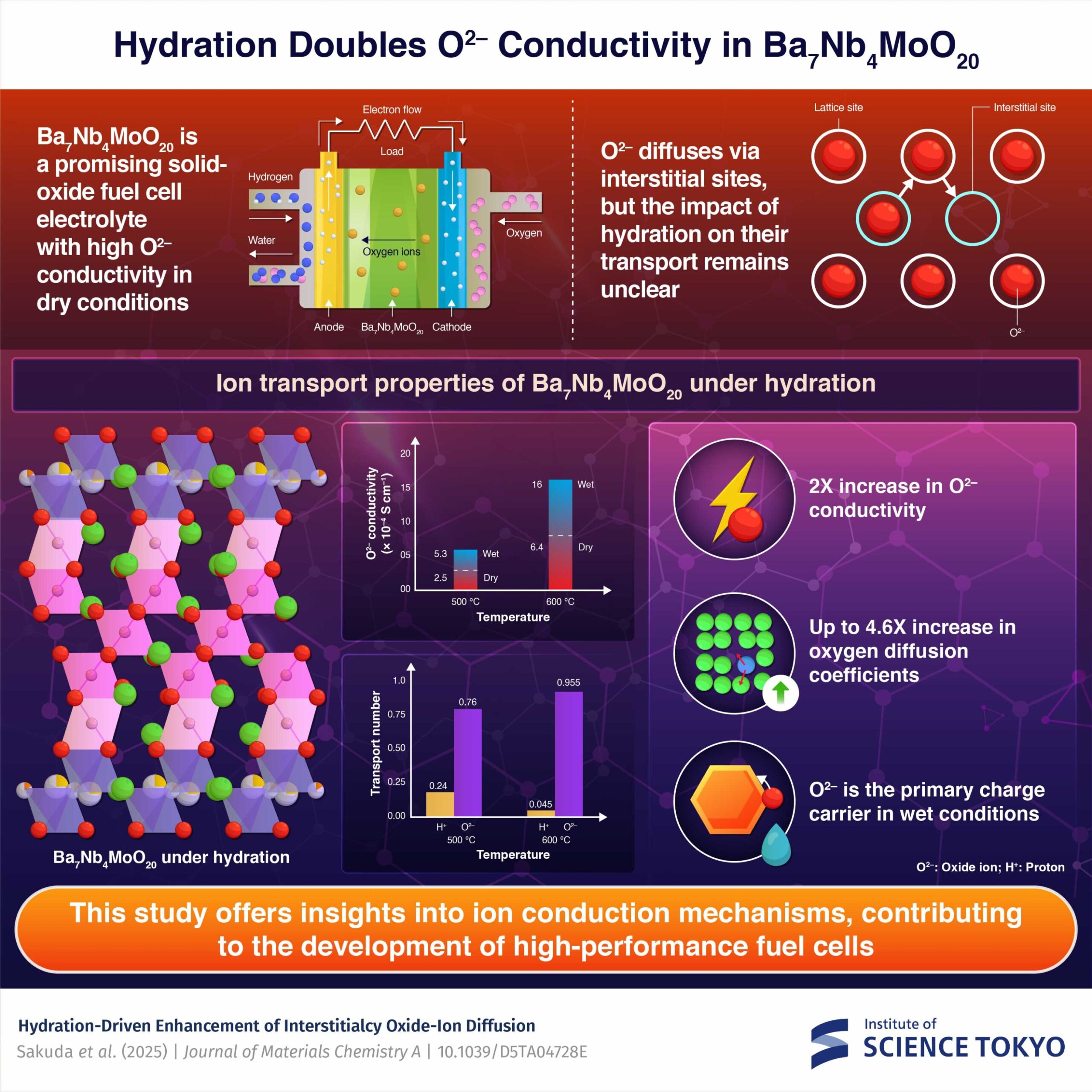
Hydration significantly boosts ion conductivity in Ba7Nb4MoO20, a promising ceramic electrolyte candidate for low-temperature solid oxide fuel cells, but its origin and mobile ionic species were unresolved issues. Now, researchers at the Institute of Science Tokyo have found that exposure to water vapor enhances oxide-ion mobility by increasing interstitial oxygen ions, nearly doubling the oxide-ion conductivity at 500 °C. The findings of this study could advance the development of efficient and durable fuel cells for clean energy applications.
Fuel cells generate electricity by combining hydrogen and oxygen, producing only water as a byproduct. Once used to provide power and drinking water for space missions, fuel cells are now being explored as a source of low-emission energy.
Fuel cells are classified by the type of electrolyte used; each type has specific advantages and drawbacks. One category includes solid oxide fuel cells and proton ceramic fuel cells, which use ceramics as electrolytes. These fuel cells operate at high temperatures—as high as 1,000 °C—eliminating the need for expensive precious metal catalysts. However, high temperatures also accelerate material degradation; therefore, it is crucial to develop highly conductive electrolytes at lower temperatures.
The recent study led by Professor Masatomo Yashima at Institute of Science Tokyo (Science Tokyo), Japan, in collaboration with researchers from Imperial College London and Kyushu University, highlights Ba7Nb4MoO20 as a promising electrolyte material. The team found that the material’s oxide-ion conductivity and diffusivity significantly improved when exposed to water vapor, offering a pathway toward more efficient, lower-temperature fuel cells.
The findings were published online on July 18, 2025, in the Journal of Materials Chemistry A, where the paper was selected as a HOT Paper in honor of its impact and…
Disclaimer
We strive to uphold the highest ethical standards in all of our reporting and coverage. We 5guruayurveda.com want to be transparent with our readers about any potential conflicts of interest that may arise in our work. It’s possible that some of the investors we feature may have connections to other businesses, including competitors or companies we write about. However, we want to assure our readers that this will not have any impact on the integrity or impartiality of our reporting. We are committed to delivering accurate, unbiased news and information to our audience, and we will continue to uphold our ethics and principles in all of our work. Thank you for your trust and support.
Website Upgradation is going on. For any glitch kindly connect at 5guruayurveda.com



